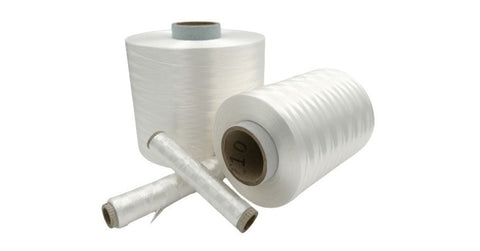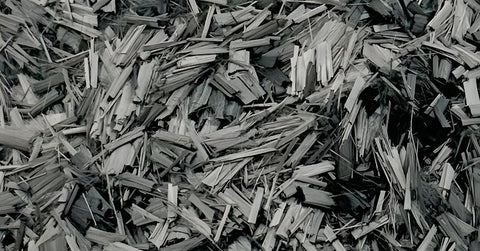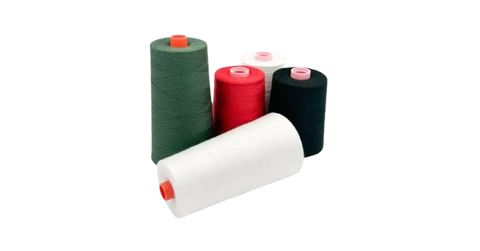The aerospace industry continually pushes the boundaries of what’s possible, demanding materials that can withstand intense pressures, extreme temperatures, and rigorous performance standards. The material that makes all these feats achievable is high-performance fiber. But what makes these fibers indispensable?
Let’s dive into the role of high-performance fibers in aerospace and unravel how they enhance everything from lightweight composites to cutting-edge thermal shielding. Whether you’re fascinated by rotor blades that defy gravity or space exploration advancements, you’ll discover the pivotal ways these fibers are shaping the future of flight. Learn a few of the specific applications that make high-performance fibers vital components in modern aviation and beyond.
Composite Materials
Composite materials have transformed aerospace engineering by enabling lighter yet stronger components that can endure extreme stress and environmental conditions. High-performance fibers, such as carbon fiber, are fundamental to these materials.
Carbon Fiber Composites in Aircraft Parts
Carbon fibers boast a renowned strength-to-weight ratio. Because of this, the material is extremely valuable in manufacturing components like aircraft wings, tail sections, and stabilizers. Carbon fiber raw material production integrates high-performance fibers with resins to create robust composite parts that contribute to superior aerodynamics and fuel efficiency.
Rotor Blades in Helicopters
Rotor blades demand exceptional durability and flexibility, which high-performance fibers provide. By integrating materials like Kevlar® fibers into blade manufacturing, engineers enhance performance and resist environmental degradation. In turn, this extends the lifecycle of these critical components.
Aircraft Fuselage Reinforcement
Aircraft fuselages must be lightweight and capable of enduring significant stress during flight. Multifilament fibers reinforce the fuselage structure, ensuring that it withstands changes in pressure, turbulence, and high-speed travel. These fibers also reduce weight, improving fuel economy and overall efficiency.
Structural Components
High-performance fibers are essential to enhancing the structural integrity of critical aerospace components, providing durability, precision, and stability.
Tensile Cables and Struts
Aircraft rely on tensile cables and structural struts that exhibit unparalleled strength. High-performance fibers like aramids (for example, Kevlar®) are commonly used in these components to ensure they maintain tensile strength without adding excess bulk. These materials are critical in stabilizing airframes and ensuring structural safety in operation.
Filament-Wound Structures
High-performance fibers also shine in filament-wound structures. For instance, fibers are meticulously wound around mandrels in specific patterns to create lightweight, high-performance cylindrical components. This method is commonly used for aerospace fuel tanks and pressure vessels, providing exceptional strength while reducing material waste during manufacturing.
Landing Gear Design Enhancements
Landing gear faces some of the highest stress levels within an aircraft. By incorporating high-performance fibers, manufacturers improve shock absorption, reduce wear, and enhance overall load capacity. Additionally, the use of lighter high-performance materials in landing gear design minimizes overall aircraft weight, further boosting fuel efficiency.

Thermal Protection Systems
The extreme temperatures encountered in aerospace applications make thermal protection systems a critical area of focus. High-performance fibers play a pivotal role in safeguarding both vehicles and occupants.
Re-Entry Spacecraft Heat Shields
Heat shields protecting spacecraft during atmospheric reentry rely heavily on high-temperature multifilament fibers. Fibers such as silica or quartz are often used to resist exceptionally high temperatures. Layered with thermal insulation and ablative coatings, they ensure structural integrity and protect against intense heat and stress.
Hypersonic Vehicle Protection
Hypersonic vehicles traveling at speeds greater than Mach 5 generate immense heat due to air friction. Aerospace engineers use high-performance fibers to develop thermal barriers and insulators. These materials provide the necessary thermal and mechanical properties to endure extreme temperatures without compromising on weight.
Rocket and Jet Engine Insulation
High-performance fibers are pivotal in insulating rocket and jet engines. Withstanding thermal cycling and high temperatures, these materials ensure engine efficiency and safety. By decreasing operating temperatures, they reduce wear and extend engine lifespan.
Aerospace Textiles
The field of aerospace textiles uses high-performance fibers to create specialized fabrics and materials for various flight-related applications.
Parachutes and Deceleration Systems
High-performance fibers such as UHMWPE fibers are vital for crafting durable and lightweight parachutes. These fibers balance tensile strength and elasticity, ensuring reliable deceleration for aircraft, spacecraft, and cargo. For space missions, high-performance fibers like Kevlar® are used to enhance parachute durability and friction resistance during atmospheric reentry.
Protective Clothing for Astronauts and Crew
Spacesuits designed for astronaut missions utilize high-performance fibers with unique properties. Aramid fibers such as Nomex® and Kevlar® provide fire resistance, tear resistance, and durability, protecting crews during spaceflight and extravehicular activities. Additionally, these fibers minimize exposure to micrometeoroids and space debris.
Hot Air Balloon Applications
While less technologically intensive than modern aerospace projects, hot air balloons benefit from high-performance fibers in their envelopes. Materials like ripstop nylon or polyester, woven with high-performance fibers, provide strength and durability while reducing the risk of rips or tears in extreme conditions.
Aerospace Repair and Maintenance
Maintenance and repair are vital in extending the lifecycle of aerospace vehicles. High-performance fibers support innovative repair solutions, enhancing reliability and durability.
Composite Patch Repairs
We can repair cracks and damage to composite structures with advanced patching techniques using multifilament fibers. These patches effectively restore component strength and prolong operational use without the need for total replacement.
Welding and Bonding Reinforcements
High-performance fibers are also integral in reinforcing joints and welds, ensuring stronger bonds between components. By incorporating these fibers, engineers reduce the likelihood of failure in high-stress areas, improving overall aircraft safety and performance.

Purchase Your High-performance Fibers From Rocket-Fibers
By choosing Rocket-Fibers’ high-performance fibers, you can unlock exceptional performance and reliability in your aerospace engineering projects. These high-quality fibers are designed to meet the rigorous demands of the industry, providing unparalleled strength, durability, and versatility.
Whether you’re looking to optimize component reinforcement, enhance joint integrity, or extend the lifespan of critical structures, Rocket-Fibers equips you with the advanced materials needed to achieve outstanding results.
We have a plethora of different high-performance fibers you can choose from. These include Alkex® Aramid, Carbon, Kevlar®, Nomex®, Technora®, UHMWPE, and Vectran®. That’s not all! We also offer services in twisting, braiding, coating, and winding these fibers so they perform exactly how you need them. Invest in Rocket-Fibers today to drive innovation and exceed the highest standards in aerospace engineering.
The role of high-performance fibers in aerospace highlights their significance in driving innovation and efficiency. By continuing to leverage cutting-edge materials, engineers are enhancing existing technologies and paving the way for new advancements in aerospace systems. Whether it’s increasing safety, improving fuel efficiency, or pushing the boundaries of space exploration, high-performance fibers will remain vital components of the aerospace industry.



